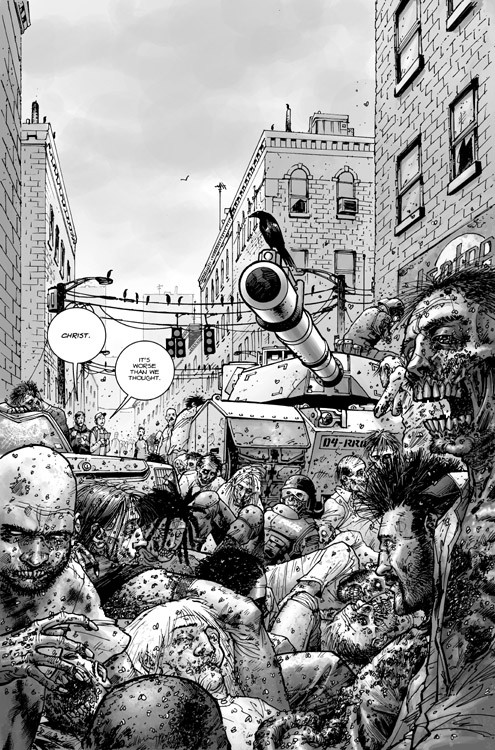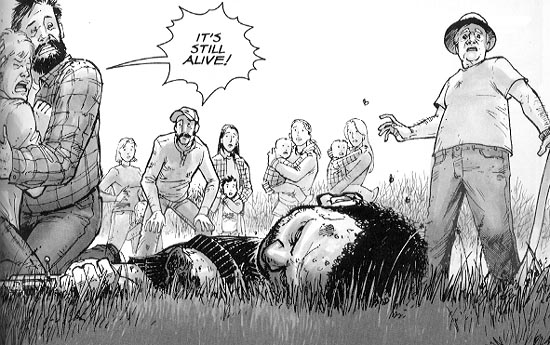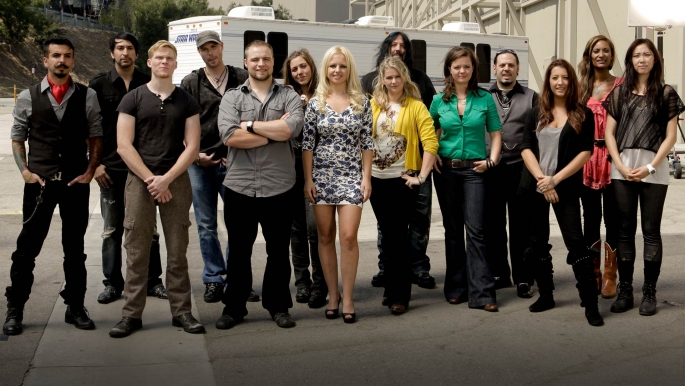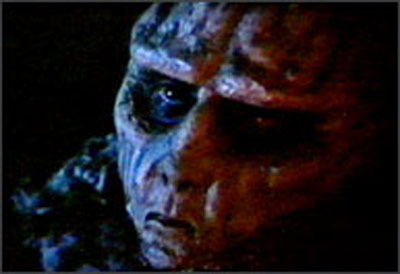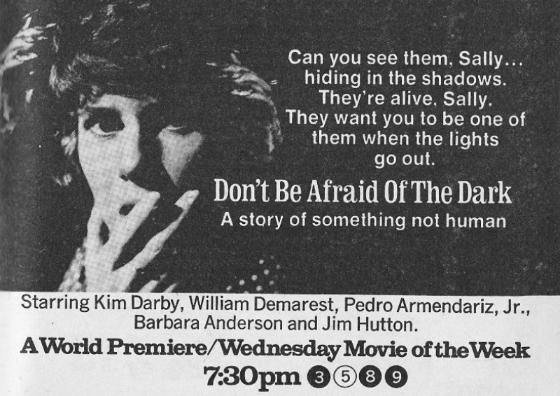Course Description and Goals
This course explores the commercial, technological, and aesthetic dimensions of television, using this fundamentally “transient and unstable” medium (as William Uricchio has called it) as a springboard for larger discussions about cultural responses to media succession. At its birth, television disrupted and reworked the media around it (film, radio, and telephone); has itself been reshaped by VCRs, DVDs, and game consoles; and now faces further redefinition by smart phones, iPads, DVRs, streaming video on demand, social networking, and piracy. Amid all the excitement, our challenge as critical media scholars is to separate the revolutionary from the evolutionary, arriving at a comprehensive picture of how the contemporary mediascape – with its promises of total information access, on-demand entertainment, and democratic participation in content creation – both extends and breaks with tradition.
Our goals, by the end of the term, will be to (A) map the historical paths by which television has grown from a radically “new” medium to an everyday part of our social and ideological fabric; (B) explore the ways in which TV, as industry and entertainment form, incorporates and responds to emerging technologies, new media genres, and globalization; (C) analyze recurrent tropes in the cultural imagining of new media, such as interactivity, “liveness,” and tensions between mass and individual, fiction and reality; and finally (D) reflect critically on our own media practices – how we use media for pleasure and knowledge, and how media in turn shape us as consumers and citizens, as gendered and raced individuals.
Texts
- Bennett, James and Niki Strange (eds). Television as Digital Media.
Durham: Duke University Press, 2011. [TVDM]
- Kackman, Michael et al (eds). Flow TV: Television in the Age of Media
Convergence. New York: Routledge, 2011. [FTV]
- Newman, Michael Z. and Elana Levine. Legitimating Television: Media
Convergence and Cultural Status. New York: Routledge, 2012. [LT]
- Links to and PDFs of additional readings on Moodle (https://moodle.swarthmore.edu/my/). Please print and bring all texts to class.
Graded Course Components
- 10% Participation
- 10% Podcast
- 15% Midterm
- 20% Journal
- 20% Blogging
- 25% Final Project
Participation
Includes regular attendance (if you must miss class, please email me with an explanation), preparation (read all materials in advance), and active, helpful contributions to discussion.
Podcast
You will sign up to record and post to Moodle a 5-minute podcast (audio or video) that responds critically to one of our readings. Podcasts must be posted by Monday night so everyone can review before class. Podcasts will begin in Week 3.
Midterm
Working in teams of two, you will find two media artifacts (clips of TV series, YouTube videos, etc.), one representing “old” and the other “new,” and bring them together in a post to the class wiki that explores their relationship and connects it to a question, theory, or author(s) we have covered. We will view and discuss these in class in Week 8.
Journal
Throughout the semester, you will keep a journal on Moodle in which you respond to prompts, track and discuss your own media habits, and analyze media content. Plan to journal once every two weeks, for a total of 6-8 substantive entries. As part of this assignment, watch several episodes of one of the TV series listed at the end of the syllabus, all of which are on reserve at McCabe.
Blogging
I will divide you into four teams of 4-6 people. Each team will take responsibility for posting to the class blog for one three-week term, while the rest of the class comments. Teams should plan to post at least every other day, for a total of 9-12 entries, with all members participating. Posts may be drawn from current news and events in media, historical materials, or responses to course topics and discussion, but should always be relevant and interesting. Note: assessment of this component will be based both on how your team performs, and how active each individual is in commenting when other teams are posting.
Final Project
Your final project, on a research question of your choice, will combine a wiki page with a 10-minute presentation and participation in a Q&A at our colloquium in Week 14.
Calendar
Readings, topics, and screenings are subject to change.
Week 1 (Jan 18) – Course Introduction
- Screening: Network (Sidney Lumet, 1976)
- Intros to LT, FTV, TVDM
Week 2 (Jan 25) – Broadcast TV: History, Forms, and Genres
- Screening: Marty (Delbert Mann, 1953)
- LT 2, “Another Golden Age?”
- Anderson, “Television Networks and the Uses of Genre”
- Williams, “Programming as Sequence or Flow”
- Dayan and Katz, from Media Events: The Live Broadcasting of History
- Ellis, from Visible Fictions: Cinema, Television, Video
- § Team 1 blogs
Week 3 (Feb 1) – TV in the Age of the Web
- TVDM Dawson, “Television’s Aesthetic of Efficiency”
- TVDM Burgess, “User-Generated Content and Everyday Cultural Practice”
- FTV Gurney, “It’s Just Like a Mini-Mall”
- § Team 1 blogs
- Podcasts begin
Week 4 (Feb 8 ) – Converging and Spreading
- You are expected to attend Henry Jenkins events: lecture 2/9 at 7 p.m. in SCI 101; conversation with students 2/10 at 10 a.m., Scheuer Room
- Excerpts from Convergence Culture, Spreadable Media
- § Team 1 blogs
Week 5 (Feb 15) – Audiences, Agency, Authorship, Interpretation
- Screening: Twin Peaks (David Lynch, 1991)
- LT 3, “The Showrunner as Auteur”
- FTV Gray, “The Reviews Are In”
- FTV Stein, “Word of Mouth on Steroids”
- § Team 2 blogs
Week 6 (Feb 22) – Spaces and Screens
- LT 6, “The Television Image and Image of Television”
- TVDM Boddy, “Is It TV Yet?”
- FTV Chamberlin, “Media Interfaces”
- § Team 2 blogs
Week 7 ( Feb 29) – Race, Ethnicity, Identity
- Screening: Color Adjustment (Marlon Riggs, 1992)
- FTV Kim, “NASCAR Nation and Television: Race-ing Whiteness”
- FTV Amaya, “Television/Televisión”
- § Team 2 blogs
Spring Break
Week 8 (Mar 14): Old and New
- Present midterms in class
- § Team 3 blogs
Week 9 (Mar 21) – Drama
- Screening: TBA
- LT 5, “Not A Soap Opera”
- Seiter and Wilson, “Soap Opera Survival Tactics”
- § Team 3 blogs
Week 10 (Mar 28) – Comedy
- Screening: TBA
- LT 4, “Upgrading the Situation Comedy”
- Butsch, “Five Decades and Three Hundred Sitcoms About Class and Gender”
- § Team 3 blogs
Week 11 (Apr 4) – Reality
- Screening: TBA
- Simon, “The Changing Face of Reality Television”
- FTV Bratich, “Affective Convergence in Reality Television”
- FTV Kavka, “Industry Convergence Shows”
- § Team 4 blogs
Week 12 (Apr 11) – News and Politics
- Screening: Good Night, and Good Luck (George Clooney, 2005)
- FTV Freedman, “The Limits of the Cellular Imaginary”
- FTV Tryon, “Representing the Presidency”
- § Team 4 blogs
Week 13 (Apr 18) – Cult
- Screening: Dr. Horrible’s Sing-Along Blog (Joss Whedon, Web, 2009); “Love and Monsters” (Doctor Who, BBC1, w. Russell T. Davies, d. Dan Zeff, 2006)
- TVDM Pearson, “Cult Television as Digital Television’s Cutting Edge”
- FTV Kompare, “Online Cult Television Authorship”
- § Team 4 blogs
Week 14 (Apr 25) – Colloquium and Course Conclusion
- Meet in SCI 101 during screening time to present final projects
There is no final exam in this course.



